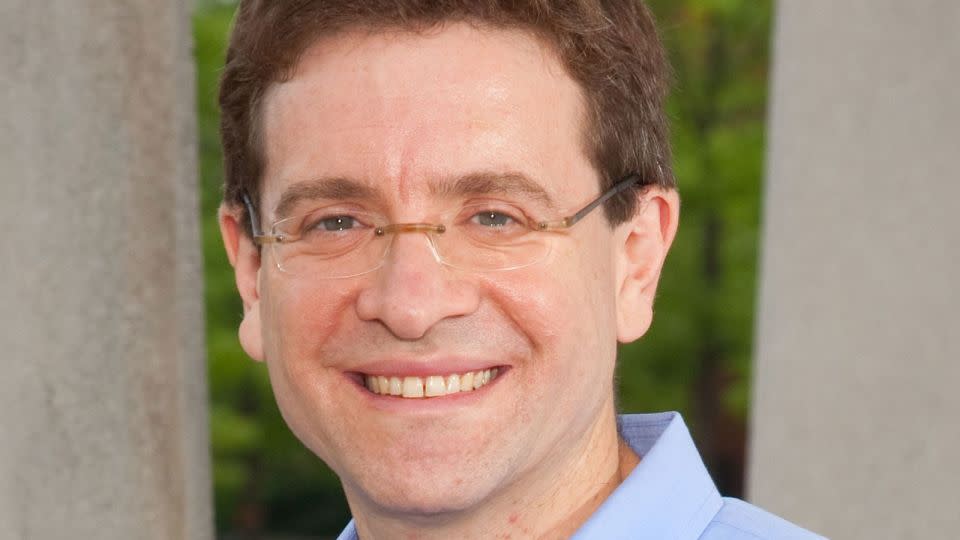Editor’s Note: Julian Zelizer, a CNN political analyst, is a professor of history and public affairs at Princeton University. He is the author and editor of 25 books, including the New York Times best-seller, “Myth America: Historians Take on the Biggest Lies and Legends About Our Past” (Basic Books). Follow him on Twitter @julianzelizer. The views expressed in this commentary are his own. View more opinion on CNN.
While many Democrats still consider former President Donald Trump to be about pure chaotic improvisation and impulse, they should consider that his campaign team has put together a very clear roadmap as to how they intend to work different institutions to their advantage. A potentially successful multi-prong strategy with electoral, media, legal, legislative and third-party intervention appears to be in place.

While 2020 was about subverting the Electoral College, Trump has been trying to work the rules to his advantage in 2024. In Nebraska, for example, Trump’s allies are attempting to pressure the legislature into changing their state rules so that they have a winner-take-all system. (Unlike the winner-take-all approach of most other states, Nebraska’s existing system distributes electoral votes proportionally to the candidate who is victorious in each of the state’s three congressional districts, with another two votes granted to the candidate who wins the statewide tally.)
A shift in the rules would avoid a similar fate to 2020, when President Joe Biden won an electoral vote from one congressional district while Trump secured the other four. This time, Trump seems to wants them all, realizing that one vote could make the difference. These tactics build on the ways that Trump’s campaign had moved to shift primary rules to favor him.
Trump is also working the 24-hour cable news and social media ecosystem to his advantage. As in 2016, his rallies have became a source of free airtime, and as in 2020, he has exploited the use of social media to send off explosive missives that dominate the news cycle. Although he has become a historic presidential candidate, given the fact that he is facing four major indictments and multiple civil lawsuits, the former reality star seems to perceive the opportunities this presents. (Trump denies all wrongdoing in these cases.)
Trump has used the images from the trials and his ongoing statements — regardless of the gag orders — to push a narrative that he is the victim of an establishment out to get him. At the same time, during the primaries and going into the general election, he understands that the coverage of his legal travails also means ongoing attention to him as opposed to Biden. If all publicity is good publicity, his pockets are overflowing.
And that publicity won’t go away any time soon. Except for the case going to trial in New York on Monday, which many analysts agree is probably the least likely to damage him politically, Trump’s legal team has succeeded in their strategy of delay and obstruction. None of the other trials are happening soon and the odds are increasingly good that they would not happen until after the election is over.
Then there is Capitol Hill. Trump’s hold on the House Republicans is strong. Not only does the majority of the GOP align with many of his views and support him as the nominee, but he now has a new generation of MAGA Republicans, such as Rep. Marjorie Taylor Greene, who entered into office inspired by his presidency and ready to do his bidding. They have worked to subvert any progress on legislation that would be determinantal to his campaign.
When a bipartisan group of senators pushed a right-of-center immigration and foreign aid bill, Trump rallied his House minions to subvert passage. Why? He wanted the immigration issue so that he could go after Biden. Now, Greene and allied House Republicans are attempting to stop Speaker Mike Johnson from moving forward with aid to Ukraine.
Trump also has mobilized his MAGA followers to kill a bill reauthorizing FISA, a program instituted in 1978 intended to constrain intelligence surveillance by requiring court approval, which Trump claims was used to spy on his campaign and which he depicts as a symbol of the “deep state.”
Finally, there are the third-party candidates. Trump’s instinct is that third-party challenges will hurt Biden more than they hurt him in battleground states. His allies will reportedly attempt to bolster third-party candidates in ways that make them more attractive to Democrats — promoting Robert Kennedy Jr. as a “champion for choice” and stressing Green Party candidate Jill Stein’s environmental record in areas where activists believe the administration has done much less than promised.
According to The New York Times, Kennedy’s most generous single donor to his super PAC is Timothy Mellon — a billionaire who is a key ally of MAGA, Inc. Other Trump supporters can look for opportunities to assist independent candidate and progressive academic Cornel West in parts of the electorate where progressive frustration with the administration’s support for the Israeli government could put votes up for grabs.
More strategic decisions will be coming. But from what we have already seen, there is a pretty coherent plan in place, one that works the Electoral College, the media, the courts, the Congress and third parties to the advantage of his candidacy and continues to put Biden in a defensive position. With the swings that we are seeing with inflation and international events, Democrats should see that these pillars of his campaign strategy could be enough to bring him a second term.
For more CNN news and newsletters create an account at CNN.com
Source Agencies
